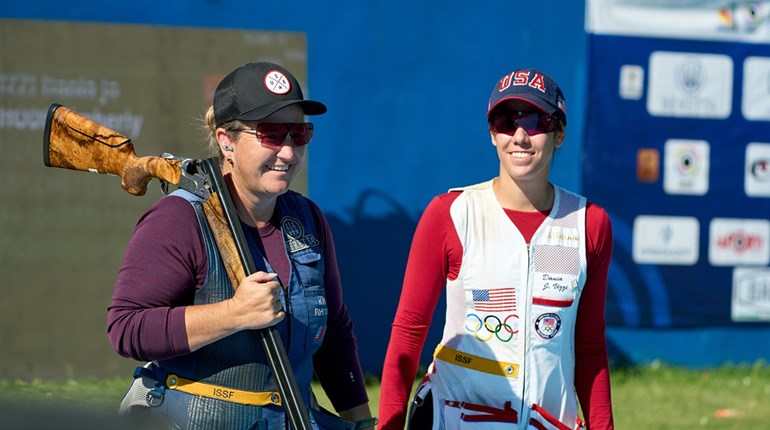
In March, SSUSA made the trek south to CORE Shooting Solutions in Baker, FL for the 2016 Accuracy International Long-Range Classic. One hundred and fourteen of the best long-range shooters from around the country competed in the two-day Precision Rifle Series (PRS) match, with stages that combined both man-made and natural obstacles to test speed and accuracy.
Shannon Kay of G.A. Precision, manufacturer of quality professional grade rifles, was the match winner with a score of 143. This was Kay’s first match after a three-year hiatus from PRS due to deployments. When I asked him how he felt after winning, Kay said, “After coming back from a long deployment to win a PRS match of this magnitude, it feels phenomenal.”
SGT Tyler Payne of the U.S. Army Marksmanship Unit (AMU) came in second place with a score of 142, dropping only a single point to Kay. Scott Satterlee of Defiance Machine/CORE was in third place, with a score of 135. Additionally, Mark Rosset of OTM Tactical came in first place in the Tactical Division with a score of 123 while Melissa Gilliand of G.A. Precision was High Woman with a score of 97.2.
The drive to CORE from Pensacola is right through the Blackwater River State Forest, which has the bluest skies in the country this side of Montana. Such beautiful scenery made for a very enjoyable early morning drive to the facility, cruising down the road in, what I deem, “following GPS blindly will send you into a lake, or possibly the Gulf” country. Luckily, CORE has plenty of signage to guide shooters to the range from the main road, FL-189.
Located on 100 acres of pristine Florida wilderness, CORE was built from the ground up by Bryan Morgan and Brian Sikes specifically for PRS and practical long-range competition. Both Sikes and Morgan are top-level shooters in PRS, and the result is a facility with multiple 1000-yard ranges, several pistol and carbine bays, automatic targets, as well as vehicles, rocks, towers, etc., that are a stage designer’s dream.
What impressed me most at CORE, is that you can walk to almost all of the ranges on site in less than 100 yards. Few ranges are able to boast this kind of compactness and efficient use of space. Even better is the use of proven, reliable technology. For example, PractiScore software is used for scoring matches on Kindle devices. Since Kindle devices use E-paper displays, they are easier to view in bright sunlight than an iPad. The folks at CORE even have their own drone that was buzzing around all weekend taking a high-res video of the match.
The Precision Rifle Series is unlike other rifle sports—there is no set course of format, and shooters fire from varied positions with both known and unknown distances. Each individual match director has sole discretion over their match, which adds excitement. Each venue also offers unique challenges for match directors to integrate innovative stage design. The three divisions, Open, Tactical, and Production, are accompanied by PRS skill stages.
In PRS, shooters duke it out throughout a season at up to 25 major matches, with their best three scores counting towards the points race and their overall PRS ranking. The top 50 ranking shooters qualify to shoot the PRS Championship Match, with the PRS Champion determined by adding points of the best three qualifying matches and the Championship Match.
Competitors at PRS events mostly use light to medium recoiling calibers, with the most popular being 6 mm and 6.5 mm varieties, due to ease of spotting shots under stressed firing positions. Everything from .223 to .300 Win. Mag. are seen at PRS matches. Nearly every shooter I encountered at the Long-Range Classic was shooting a bolt action rifle, paired with a scope with 15x or 25x max power with mil-based reticle and knobs. Furthermore, each stage requires some type of physical activity, since the shooter has a time limit to move between the various courses-of-fire. Similar to 3-Gun, each stage has a set par time for scoring purposes.
PRS shooters create data cards that can be referred to quickly and do not require the manipulation of a device. They wear the data cards on their wrist or forearm for quick reference. Some use a smartphone app to generate their card in advance and laminate it to make it weatherproof. Others use a wrist mount that allows them to use their smartphone as their data card.
At the conclusion of the first day there was a bonfire, BBQ, and live entertainment from the Bludworth Band while day two’s finale was the awards ceremony held in the CORE picnic area outside the clubhouse. So as you can see, it is not something to be missed!
2016 Accuracy International Long-Range Classic Leaderboard


































